Hand irritation from rubber gloves. Hands irritation
Allergy is a manifestation of the body's defensive reaction to external stimuli. If the skin of your hands suddenly became dry, itchy and red rash appeared, analyze, maybe a new detergent or powder appeared in your house?
Each housewife has a whole arsenal of detergents: for dishes, bathtub, glasses, etc. They are indispensable assistants in the fight for cleanliness, but more often they cause allergic reactions. The composition of such funds include aggressive substances, which become the cause of allergies.
What is the reason
There are several causes of an allergic reaction to detergents. They can be divided into two main groups:
- the action of active stimuli;
- individual features of the body.
Active stimuli include components included in the product:
- phosphates;
- bleach;
- flavors and fragrances;
- emollient additives.
Each of them can cause allergies, including the supposedly safe formulations of children's powders and dish detergents.
The individual characteristics of the body include:
- intolerance to the chemical elements that make up the product;
- weakened immunity that is unable to prevent negative effects household chemicals;
- prolonged skin contact with detergent.
When colliding with an unfamiliar substance, the body begins to produce protective antibodies and includes a response in the form of an allergic reaction to an irritant. This process is called sensitization.
How to recognize the symptoms
The manifestation of allergies to detergents is almost no different from allergies to other stimuli. It can occur in areas of skin that are in direct contact with an irritant, or throughout the body. Its most common symptoms include:
- redness;
- dryness, flaking and cracking of the skin;
- feeling itchy;
- irritation and rash;
- red spots;
- chemical burn (in rare cases).
Below are photos of symptoms in the hands of people who have been affected by the effects of detergents.


The reaction of the organism can be different: one may be allergic to dryness and itching, and from the other one can even get a chemical burn. There is a cumulative effect. If at first, in contact with the medium, the skin became covered with red spots, then, if you do not stop using it, for example, Quincke’s edema may develop.
How to treat
The treatment of any type of allergy consists primarily in minimizing unpleasant symptoms and alleviating a person’s condition. If you find that during cleaning you have redness and itching of the skin of your hands, you should immediately stop contact with the detergent, wash your hands and treat them with an antihistamine.
To eliminate the external manifestations of allergy, a number of drugs and cosmetics are also used:
- antihistamines - as in the form of tablets (Loratadin, Claritin, Suprastin, Tavegil), and in the form of ointments for external use (Fenistil, Psilo-balsam). They are necessary to eliminate the rash, itching and redness;
- topical corticosteroids - hormonal drugs with strong anti-inflammatory and antipruritic effects (Triderm, FluoroCort, Fluciner, etc.). They have side effects, therefore they are prescribed in difficult cases by a short course, after which it is recommended to switch to weaker drugs;
- calcium gluconate - has the ability to inhibit immune cells responsible for the development of an allergic reaction;
- special cream emollients - on the basis of paraffin, wax, silicone, vaseline, mineral, vegetable and animal oils (Emolium, Lokobeyz, A-Derma Ekzomega). Shallow penetration into the skin, forming on it a thin film that prevents the evaporation of moisture. As a result, the water-lipid layer of the skin is restored, dryness and itching disappear, microcracks heal.

Sometimes severe itching leads to scratching of the skin, wounds and suppurations are formed on it. In such cases, an antibiotic ointment is prescribed. When the wounds heal, you can continue to use conventional antihistamine ointment.
Of course, in the future it is better not to work with the agent that caused the allergy, replacing it with a less aggressive one. And it is better to always wear gloves to prevent any contact of detergents with the skin of hands.
Remember that timely treatment of allergic manifestations will help to avoid a serious disease - dermatitis of the skin, often of a chronic nature.
How to prevent and what to replace
Allergy to detergents - not a deadly disease, though rather unpleasant. The best means of prevention would be the rejection of detergent-cleaning-powder means. But this is impossible. Therefore, try to follow some rules that will help minimize the risk of an allergic reaction.
- when buying powder, dishwashing gel or floor-washing concentrate, carefully study their composition: it is better if there is no ammonia, chlorine, fragrances, phenol, acetone;
- a proven method for washing dishes is baby liquid soap;
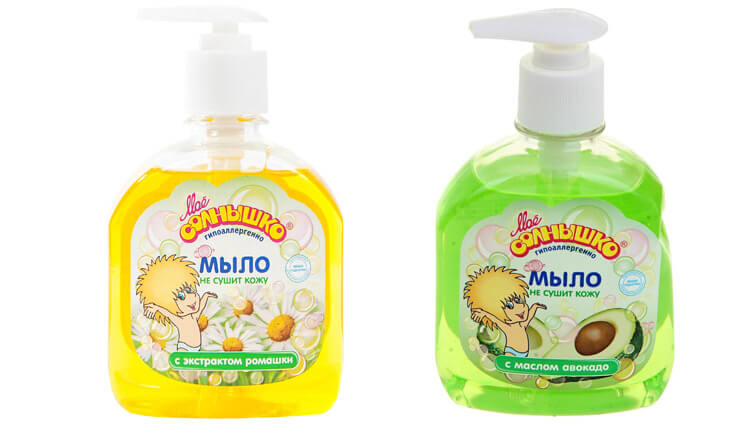
- use products marked “for sensitive skin” or “hypoallergenic”. Unfortunately, this is not an absolute guarantee that there will be no allergies, but, in case of its occurrence, the symptoms will be mild;
- try not to use detergent all the time. Of course, one cannot get away from daily washing up, but for other types of cleaning it is not necessary to use special products every day;
- and, as already mentioned, the optimal solution is gloves. Use them to protect yourself as much as possible from an allergic reaction and keep your hands skin young and healthy.
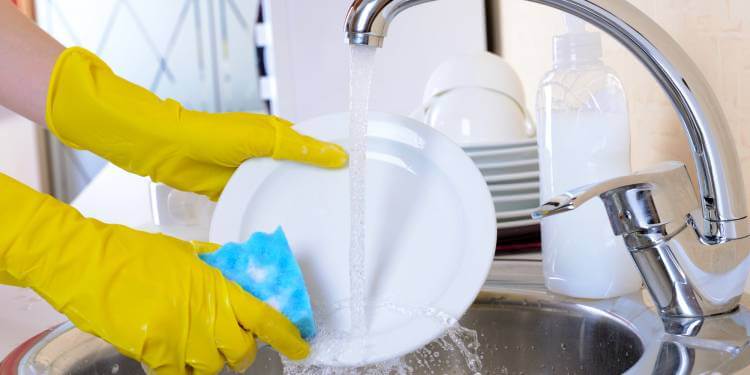
Do not forget that in the struggle for purity, natural means are in no way inferior to modern household chemicals.
Our grandmothers' faithful helpers - vinegar, citric acid, baking soda and mustard:
- vinegar - an excellent tool for washing windows, for cleaning plumbing or getting rid of limescale;
- lemon acid will easily remove scale in a washing machine or electric kettle;
- baking soda can be used to clean any surfaces, it will disinfect the surface, eliminate the unpleasant odor and at the same time - no stains;
- mustard - This is a 2-in-1: dishwashing detergent and washing powder for hand and machine washing.
Allergy to detergents is also called the disease of purity. Fortunately, today many manufacturers of household chemicals focus on "safe" cleanliness and produce products without harmful chemical additives. On their funds you can find the mark "Bio", "Eko" or "Organic". But an allergen can be any substance, including natural. Therefore - be careful and take care of your hands!
The desire for cleanliness should be inherent in every self-respecting hostess. Therefore, when an ideal result is achieved, women resort to the help of special cleaning products. Various gels, sprays and creams to remove dirt on the surface return the cleanliness of the house. However, the negative impact of these funds is often observed. Disappointment can occur when you are allergic to detergents on your hands.
Why does a reaction occur?
Allergy treatment should be prescribed only after the results of the identification of an allergen that is irritating to the skin. Negative reactions can occur for a number of reasons.
Allergy symptoms
 Symptoms - allergic rhinitis
Symptoms - allergic rhinitis Allergic reaction to detergents is very aggressive. It can be noted immediately after using the powder, gel or spray, as well as be expressed after some time. Symptoms, the appearance of which requires urgent treatment, are:
allergic cough;
sore throat;
attacks of shortness of breath, asthma;
redness of the mucous membranes of the eyes;
the appearance of lacrimation.
hyperemia of the skin surface;
severe itching;
dry feeling;
peeling;
rashes on hands and on other areas of the body;
ulcers that heal for a long time;
swelling of tissues, mucous membranes of the nose, eyes, respiratory tract;
itchy nose;
 Symptoms - peeling of the skin of the hands
Symptoms - peeling of the skin of the hands A lesion can occur without all the symptoms present at the same time. Most often, the signs appear on the hands. Symptoms of allergic rhinitis, coughing, and difficulty breathing are observed when using washing powders or powdered cleansers. As a result of ingress of small particles into the respiratory tract and mucous membranes, irritation occurs. Treatment of such allergies involves the complete exclusion of aggressive effects.
Any sign after using the tool, whether it is on the hands or other parts of the body, should push for a mandatory visit to the doctor. It will help to identify the irritant by sending the patient for a laboratory examination. Only after this should be prescribed treatment.
Allergy Treatment
 Antihistamines I, II and III generation.
Antihistamines I, II and III generation. Treatment of negative reactions to detergents should begin with the exclusion of exposure to the stimulus. In this case, the allergen is eliminated not only for the reaction time, but also a complete replacement of the usual goods with hypoallergenic ones takes place.
At the first stage of therapy, antihistamine drugs are indicated. These include:
Loratadine;
Fenistil.
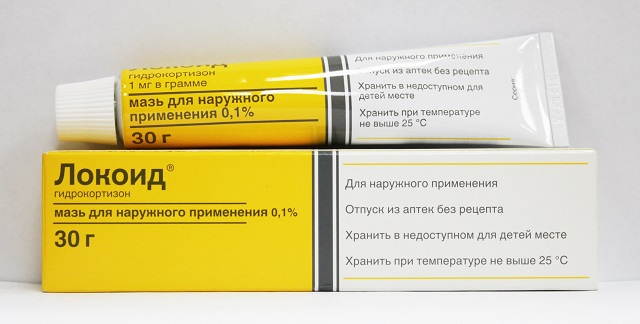 Locoidaz Locoid
Locoidaz Locoid They block the production of histamine and prevent the spread of the stimulus in the body.
The reaction to the surface of the skin can be controlled with corticosteroids. To mitigate irritation and eliminate itching, you can use Prednisolone, Hydrocortisone, Locoid. Advantan also has a calming effect.
 Drops Glazolin
Drops Glazolin If the irritation is not strong, but the skin is dry, then the use of non-hormonal agents Bepantin, D-panthenol, Radevit, Psilo-balm is recommended.
Irritable mucous membranes of the nose can be treated with vasoconstrictor antiallergic drugs Nasonex, Tizin. In the eyes allowed to drip Vizin, Galazolin.
From allergic cough, you can use special syrups with antihistamine effect. These include Erius, Claritin, Tavegil.
Preventive measures
After eliminating the symptoms of allergy, it is necessary to carefully select cleaning products.
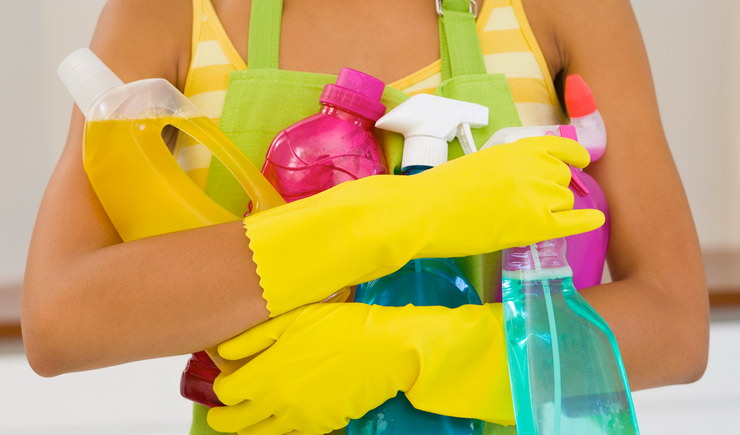
If the first symptoms of allergy appear when working with a detergent, you should immediately wash the affected area with water. Then it is necessary to lubricate the skin with anti-allergic ointment. It is important to remember that the reaction will occur again and again until the effect of the stimulus is eliminated.
Probably, there is not a single person who didn’t get irritated on his hands even once in his life. Therefore, it is clear to everyone how unpleasant it is, albeit in most cases painless. And how uncomfortable women feel that at such moments they feel their aesthetic imperfection! And in order to try to avoid another similar experience, let's find out why there is irritation in the hands and how you can avoid the “meeting” with it.
What causes irritation
Most often, the reasons for its appearance are quite harmless. It manifests itself primarily in the hands, as they are most accessible to external influence. Among the factors causing irritation on the hands, the most frequent are:
- Sharp temperature change.
- Dryness or, conversely, excessive humidity.
- Poor-quality household products: detergents and cleaning products, cosmetics, washing powder, from which not enough thoroughly washed out linen, etc.
- Cold air.
- Synthetics used to make a bed or clothes.
- All kinds of allergies: dust, wool, food.
- Irritation of the skin on the hands may follow the mechanical impact (tight clothing, which is constantly in contact with the body, regular friction when working at the computer, shaving if you shave your hands).
- Professional reasons - when working with chemical or volatile (like cement) substances.
However, it is worth remembering that irritation in the hands can also be a symptom of some diseases. In adults, it most often signals digestive problems. 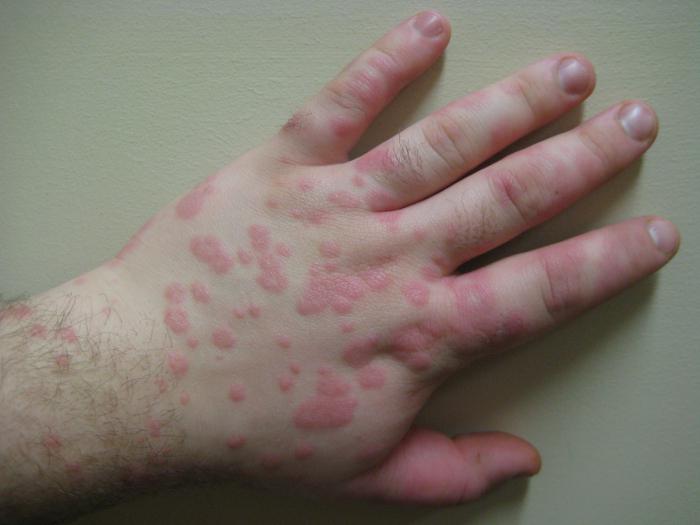
Allergy to low temperatures
The most unpleasant is irritation in the hands of the cold, because a person during his life cannot be completely isolated from the cold - unless he moves to a tropical country and stops using the refrigerator. Why there is a cold allergy, it is not established, however the list of the factors provoking its manifestations is found out. Among them:
- Sharp decrease in temperature. For example, when leaving a warm apartment in the cold, especially when the wind.
- Contact with cold watereven short term.
- Eating cold food or drinking cold drinks.
- Allergy - any. It reduces the resilience and "frees the way" cold.
- Some infections like tuberculosis and their treatment with antibiotics. Often, the reaction to frost occurs after helminth diseases.
- Long stress.
- Heredity.
In the latter case, the irritation on the hands rather caused by a humid wind, rather than low temperature. 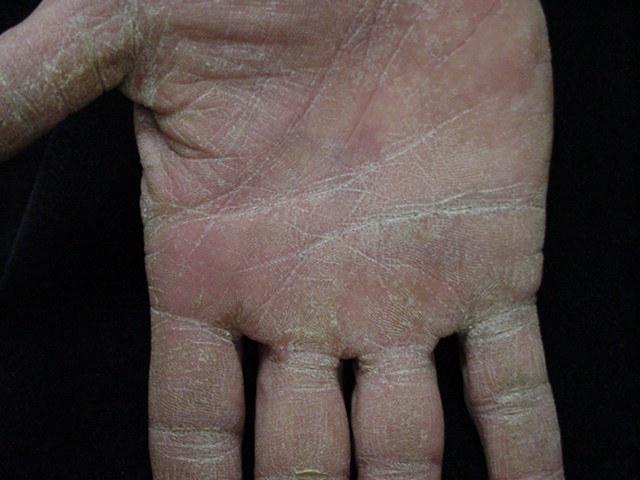
Prevention of cold allergies
This reaction of the body is especially unpleasant because it can result in swelling, blisters, and in rare cases - problems with breathing. Therefore, a person who has had irritation in his hands from the cold, must take certain measures to prevent its recurrence. I.e:
- Warm and layered dress. It is better to wear two thin sweaters than one thick: the layer between them will warm additionally.
- Underwear to buy only natural cotton to avoid allergies.
- Drink hot milk or tea before going to the frost, and smear your face with a fat cream.
- Wash only with warm water.
- Do not drink cold drinks and warm food that is removed from the refrigerator.
- Do not swim in the cold sea (river, lake, etc.).
And if the irritation on the hands still appeared, immediately take action: make soda lotions or lubricate with oil vitamin E.
Dermatitis
No less frequent factors causing irritation on the hands are atopic and contact dermatitis. Almost all children go through the first one at the age of two months - parents fight with diathesis regularly. Someone he passes, someone can stay until the end of life, it depends on heredity.
Contact dermatitis is an allergic irritation on the hands and other parts of the body associated with touching the skin with an allergen. If it is found out what the body reacts to, you just need to avoid contact with the substance (for example, clean the oven with gloves). Relief of symptoms is achieved by the use of antihistamines.
Rash in a child as a sign of the disease

It is necessary to be much more picky if there is irritation in the hands of a child. First of all, it can be a symptom of any of the specifically childhood diseases: rubella, measles, chickenpox or scarlet fever. The sooner in this case the baby is examined by a pediatrician, the better for his health.
In addition to serious diseases, irritation in the hands of a child may be caused by hemorrhagia. There is nothing dangerous for the baby in this, except for discomfort (and even that is easy) and the danger of scratching to the blood, which happens not so often. However, in order to avoid diaper rash, it is better to pay attention to the rash.
Much worse if the irritation in the hands of a child appeared due to scabies. Not seen in time, it can spread throughout the body, and to other family members. So if the baby has a rash, it is better to immediately contact the clinic.
Irritation on the hands creates physical and psychological discomfort, and in some cases is a symptom of the disease. When choosing methods of treating irritation on the skin of the hands, the cause of the dermatological manifestation is of decisive importance.
How to treat irritation on the hands?
Consider several ways to treat irritation depending on what caused such a nuisance.
Aggressive household chemicals
Most women do their homework on their own, so after using household chemicals, problems with the hands are possible. Along with drying the skin, irritation and rashes on the hands may occur. Therefore, the advice to work at home in rubber gloves is relevant, despite the fact that many manufacturers point to the hypoallergenicity of their products. In order to treat irritation on the hands of detergents, moisturizing masks and wraps with the addition of natural oils (tea tree, calendula, chamomile, lavender) are used.
Food allergies
If irritation appeared on the hands, and besides, the skin itches, then an allergic reaction to foodstuffs is most likely to occur. In this case, you need to revise your menu, excluding food that causes allergies. It is also desirable to introduce into the daily diet green vegetables, milk and dairy products, poultry or veal. It is desirable to use seafood more often and eat beet dishes. To relieve severe itching and irritation with increased reactivity, hormonal ointments and antihistamines.
Allergy to cold
Cold allergy , arising as a response to the effects of natural factors (cold, wind), also manifests itself in the form of swelling of hands, cracks and irritation. In this situation it is necessary to exclude the contact of the skin of the hands with cold air. To do this, it is recommended to lubricate your hands before going out with special creams and wear warm gloves.
Atopic dermatitis
This is a disease that is especially difficult to cure. As a rule, the disease is inherited, provoking it  occurrence factor is experiencing a stressful situation. Adding an infection can cause a rash, red spots and sores. Antibacterial ointments, for example, Triderm, Elok, as well as hormone-based products, save from irritation on the hands.
occurrence factor is experiencing a stressful situation. Adding an infection can cause a rash, red spots and sores. Antibacterial ointments, for example, Triderm, Elok, as well as hormone-based products, save from irritation on the hands.
Fungus
Sometimes spots and irritation on the hands can be a manifestation of fungal diseases, indicate the presence of worms in the body, signal a lack of vitamins. In this regard, with long-term or regularly occurring rashes, it is necessary to consult a dermatologist for advice.
Allergy is a special sensitivity to certain substances, which causes the most diverse reactions of the body.
Choice of detergent
You should not buy the tool, relying on what it says advertising. Naturally, the manufacturer first of all needs to make as many sales as possible, therefore it is quite understandable that everyone will say that their products are the best and safest;
It is advisable to choose a product that does not contain components that are particularly harmful to the skin of the hands: acid, alkali, acetone, formaldehyde, surfactant;
The most safe detergents, on the label of which there are the inscriptions: eco, bio, organic. This suggests that the product contains only natural ingredients. But here you need to be careful, as they can cause allergies with their individual intolerance;
It is recommended to choose detergents that do not contain chlorine. He himself almost does not cause allergic reactions, but is very irritating and dries the skin, contributing to the violation of its natural microflora. In this regard, the hands become very vulnerable to the impact of other components on them.
Important! And even choosing the safest detergent, you need to carry out all the work with its use in gloves, and after finishing wash them thoroughly with soap. This will help avoid prolonged direct contact with the substance, and protect yourself from the development of allergies on the skin of the hands.
Symptoms
Allergic reaction may be different, it depends on the characteristics of the body of each particular person. The appearance of allergy to detergent can be identified by the following symptoms:
- The skin of the hands is irritated, reddened and covered with a rash;
- Itching and peeling begins;
- Dryness appears, and then bleeding cracks;
- In severe cases, severe tissue swelling or chemical burns can occur.


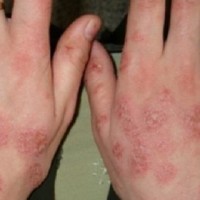
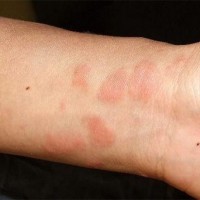

Important! You should know that the development of allergy is often accompanied by a cumulative effect. Therefore, do not treat the disease lightly. After all, even the most harmless rash can later turn into angioedema and further suffocation.
Why allergic to detergents
Skin allergy is a fairly common disease these days. This is facilitated by a number of reasons:
- Climate and environmental conditions in the place of residence;
- Metabolic disease;
- Gastrointestinal diseases;
- Weak immune system;
- Age-related changes of the body;
- Medications (especially antibiotics);
- Stress and depression;
- Heredity.
All of these factors are concomitant.
First of all, allergy to detergents is a result of contact with chemical elements, that is, a direct hit of the allergen on the skin of the hands. If only natural ingredients are included, then an allergic reaction indicates intolerance to one of them.
If this happens regularly, then irritation (urticaria) can very quickly develop into dermatitis or eczema, which will require careful and long-term treatment. In addition, it may not be limited to a local focus, a rash and bleeding, non-healing wounds can spread throughout the body.
Treatment
Do not ignore the irritation on the skin of the hands after using detergents. It is necessary to start treatment as soon as possible in order to prevent more serious consequences.
To do this, you need to use special medications, the use of which should be discussed with your doctor. In parallel, treatment can be carried out. folk remedies.
Medications
Treatment of hand skin allergies to detergents is the same as for everyone else.
It is necessary to alleviate the symptoms of the disease. If the irritation began at the cleaning stage, then you should immediately stop it, wash your hands and apply an antihistamine gel, cream or ointment on the skin (Elidel, Fenistil-gel and others).
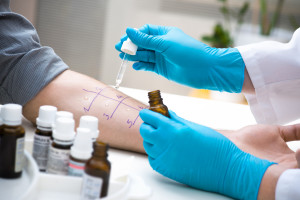
Next you need to contact a specialist who will prescribe a comprehensive treatment, which should include: a symptomatic method (compresses, a contrast shower), antihistamines for both internal (Claritin, Zyrtec), and for external use.
If the disease has passed into a severe stage, corticosteroids (prednisone, kenalog) and immunomodulators can be used to strengthen the immune system.
Folk remedies
After consulting with your doctor, you can use folk remedies for the treatment of allergies, which not only relieve its symptoms, but also cleanse the body and normalize the immune system.
Mumie. One gram of mummy needs to be dissolved in a hundred milliliters warm water and use for compresses. It is necessary to dilute one teaspoon of this solution in another hundred milliliters boiled water and take in the morning before eating. Procedures should be carried out for three weeks;
Eggshell. One third of ground or crushed shell eggs are mixed with a few drops of lemon juice to dissolve completely and taken three times a day, half an hour after eating for a month;
Juices. The most effective combination of juices for treating allergies is a mixture of carrot (three parts), beetroot (one part) and cucumber (one part) half a cup three times a day one hour before meals;
Herbs. You can use broths and infusions of buckthorn root, chicory, dandelion, watch leaves, duckweed, string or fruits of fennel. All this can be purchased at any pharmacy and applied in accordance with the instructions.
Polysorb is an enterosorbent that helps cleanse the body of allergens and quickly relieve symptoms of the disease.
 It fits perfectly into the complex therapy of allergy treatment, as well as being taken for the purposes of prevention. It speeds up recovery, boosts immunity and significantly normalizes and improves the overall condition of the body.
It fits perfectly into the complex therapy of allergy treatment, as well as being taken for the purposes of prevention. It speeds up recovery, boosts immunity and significantly normalizes and improves the overall condition of the body.
Polysorb refers to affordable drugs, besides it can be used to treat pregnant and lactating women, as well as newborns. In addition to allergens, while taking Polysorb, a number of toxins and bacteria leave the body.
Preventive measures
- If you already identified a detergent that causes allergies, you need to completely eliminate contact with him;
- It is recommended to choose detergents, which include natural ingredients, it is desirable that they have the inscription - hypoallergenic;
- All work should be carried out with gloves, and if the detergent still gets on the skin of the hands, you should wash them with soap and treat with an antihistamine;
- Use active chemicals only when needed, and not with daily cleaning.
 As can be seen from the above, everyone can face hand skin allergies to detergents. But if you use them carefully, with caution, then this problem can be completely avoided.
As can be seen from the above, everyone can face hand skin allergies to detergents. But if you use them carefully, with caution, then this problem can be completely avoided.
Well, if the trouble still happened, you need to urgently take measures to relieve the symptoms of the disease, and seek help from specialists and not ignore their recommendations, since allergy is a rather insidious and unpredictable disease.

